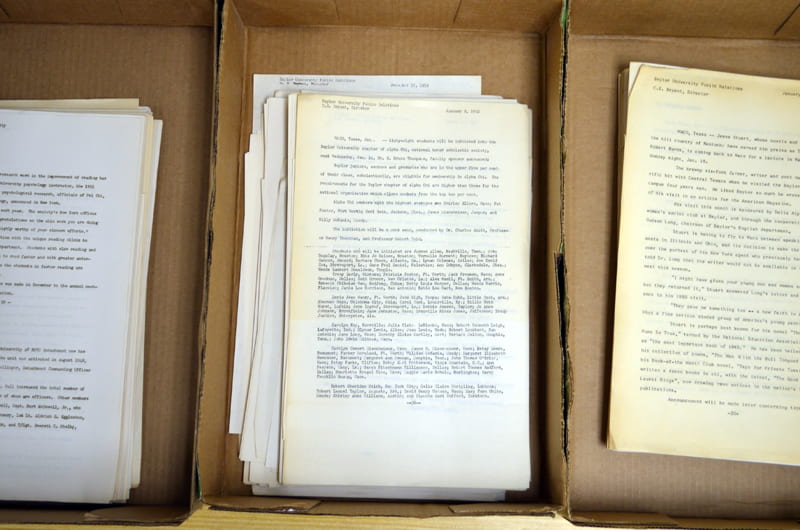Several members of the DPG team were privileged to present at the Armstrong Browning Library’s annual Browning Day celebration this week. The event, held on Robert Browning’s birthday every year, celebrates the life, legacy and impact of the poet’s work and features receptions, guest speakers and more. Assistant Director Darryl Stuhr and Curator of Digital Collections Eric Ames joined Ian…
Tag: Collaborations
(Digital Collections) “Unquestionably the Most Elaborate and Complete, of Any Which I Have Seen” – An Update on the Browning Letters Project
If it’s Valentine’s Day, it must be time for another update on our most love-centric undertaking, the Browning Letters Project! Two years ago, we announced the unveiling of the first phase of the project, wherein 1,400 letters digitized from the collections of Baylor University’s Armstrong Browning Library and Wellesley College were placed online for the first time, including the “love…
(Digital Collections) This Train is Bound for D.C.: The Smithsonian-Baylor Digital Projects Group Black Gospel Collaboration Confirmed!
Some big news regarding the Black Gospel Music Restoration Project was made official this weekend via the social media of the Smithsonian’s National Museum of African American History and Culture (NMAAHC): the Black Gospel Music Restoration Project (BGMRP), managed and maintained by our own Digital Projects Group, will become part of the permanent collection when the museum opens its…
(Digital Collections) Baylor Faculty Members Secure Grant Funding for Digital Collections-Based Research Project
In a year filled with firsts for the Digital Projects Group, we’re excited to announce another. Two Baylor University faculty members – Dr. Greg Hamerly (Associate Professor, Computer Science) and Dr. William Weaver (Assistant Professor, Great Texts Program – Honors College) – shared the news with this week that they had received a URC grant for a joint project entitled…
(Digital Collections) A Century of Daily Baylor History, Now Online: The “Lariat” Digital Collection
If you follow us on Facebook, you’ll recall a few weeks ago that I teased some “big news” was forthcoming. Well, the wait is over, and we’re excited to announce that thanks to the efforts of the Digitization Projects Group, The Texas Collection and the office of Student Publications, the entire run of the Baylor University Lariat is now available…

(Digital Collections) Stop the Presses, Start the Scanners: Digitizing Baylor’s News Release Archive
It’s hard to imagine given the pervasive nature of the media outlets available today – from the major broadcast networks, cable news networks, blogs, microblogs, social media avenues and more – but there was a time when the concept of a press release didn’t exist. The content readers found in their daily newspaper or heard over the air on their…
(Digital Collections) “How do I love thee?” Let Us Digitize the Ways!
They were written between two of the most famous names in Victorian poetry, spanning a famous courtship, an elopement to Italy, and a widower’s final years. They were preserved by two institutions of higher education in the United States, one a private liberal arts college in the Northeast, the other a private Baptist university in Texas. And now, for the…
(Digital Collections) “War of the Rebellion Atlas” Puts DPG on the Map in Tennessee
The Digitization Projects Group’s efforts to put the War of the Rebellion Atlas online have once again led to an exciting collaboration, this time with Zada Law, Director of the Fullerton Laboratory for Spatial Technology at Middle Tennessee State University (MTSU). Law will be utilizing high-resolution copies of several Atlas maps of the Nashville area to see if defensive earthworks…
